Universe Sandbox Roadmap: 2023 & Beyond

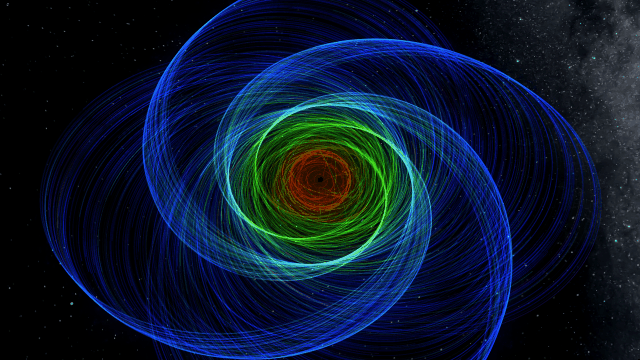
We’re working to give you more power to understand and control the complex phenomena of the universe. Our roadmap for 2023 includes simulating the lakes of liquid methane on Titan, hot planets emitting light, and realistically colliding spacecraft and bananas. But before we dive in, let’s recap some accomplishments from last year.
Highlights From 2022
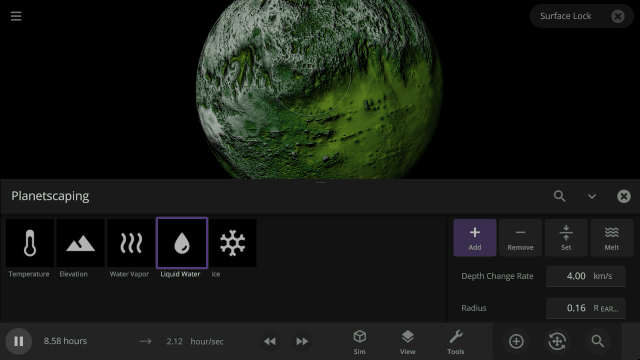
In 2022, we put out 9 updates for Universe Sandbox. These included many new features, but some of our favorites are
- Spinning up planets so fast they break apart using the new Force Spin tool
- Exploring constellations for 10 different cultures
- Customizing the look and topography of planets and moons with a library of realistic color and height maps
- Fundamental improvements to our planetary collision system
Check out our 2022 Retrospective for more on what we did last year.
So What’s the Plan for 2023?
- Add more materials for constructing & simulating planets & atmospheres
- Overhaul our under-the-hood physics architecture to improve accuracy and performance
- Simulate light emission from hot planets
- Continue work on bringing Universe Sandbox to phones and tablets
- Improve our development tools to identify issues quickly and provide a more bug-free experience
Many of our projects, like bringing Universe Sandbox to phones and tablets, have been in development for months or years. While we plan to work on everything we discuss here in 2023, complications may cause features to be delayed, and our priorities may change.
More Materials & Composition Simulation
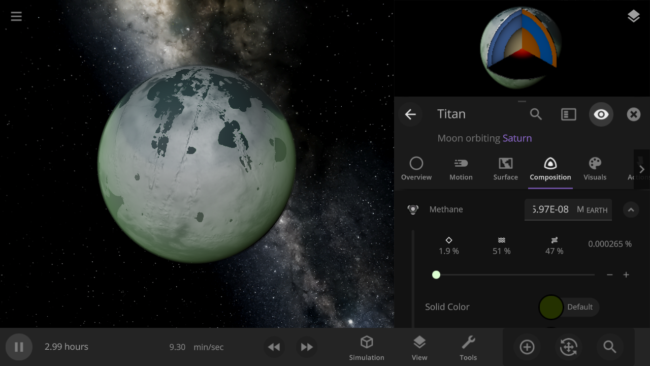
We’re expanding the number of materials in Universe Sandbox you can use to simulate, construct, and terraform planets and atmospheres realistically. For example, new materials like methane will allow us to fully simulate lakes of liquid methane on Titan. We’re also adding advanced simulation to compute planet radii based on the pressure and temperature of each material in the planet’s composition. Ever wonder how big the Moon would be if it were made entirely of oxygen? Soon you’ll be able to find out.
- A (Multi) Material World
- Planet radii and atmospheres will be realistically simulated based on the mass and phase (solid, liquid, and gas) of each material in their composition.
- Simulation of an atmosphere’s heating (the greenhouse effect), color, and opacity, including Venus-like atmospheres, will be based on their material composition.
- Designing the properties, data views, and tools for you to construct atmospheres, build and terraform planets, and track these materials is a crucial part of our development process.
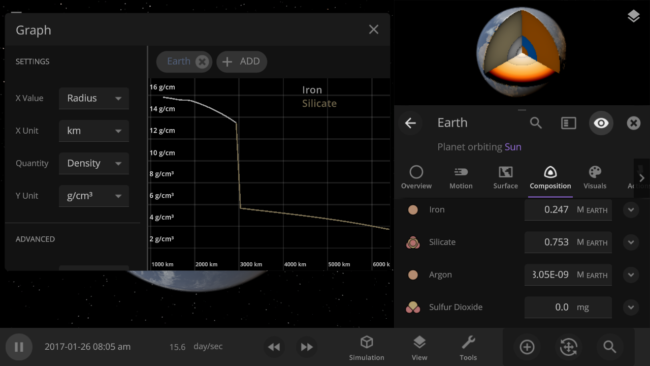
- Physics-based Phases
- The phase of each material in a planet’s composition will be realistically determined based on its pressure and temperature. Make a planet entirely out of water and see the phases from the inside out (our current model says it would be 100% liquid inside).
- Material phase models are based on geological and astrophysical measurements and research.
- Planet radii will then be calculated based on the phase and density of each material that makes up a planet’s composition. If you change the composition, the radius will change with it.
- The phase of each material in a planet’s composition will be realistically determined based on its pressure and temperature. Make a planet entirely out of water and see the phases from the inside out (our current model says it would be 100% liquid inside).
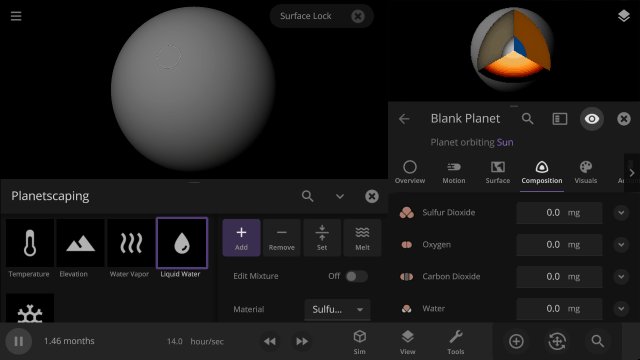
- Tracking Materials
- Materials will have customizable colors based on their physical properties that will blend on the surface of objects. Watch oceans of methane mix with oceans of oxygen in real time.
Physics Fundamentals
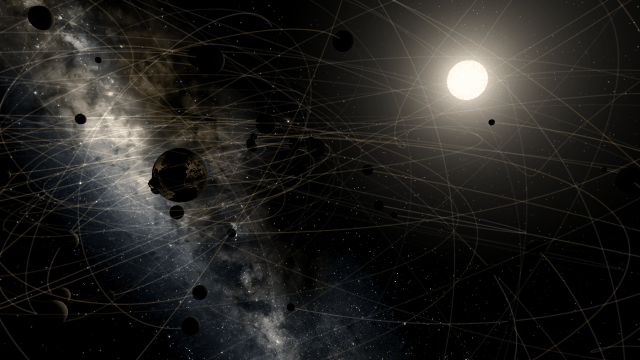
Our project to add everyday object collisions, like throwing a banana at a car, led us to first rewrite our physics architecture. Realistically smashing satellites together is part of continuous efforts to improve the realism and performance of Universe Sandbox.
- New Physics Architecture
- Overhauling our custom N-body (gravity) simulation will improve gravity-related accuracy, stability, and performance. Tight orbits like the Hubble Space Telescope around Earth should be stable at simulation speeds as high as a month per second (instead of a few days).
- These updates are the foundation for future physics improvements, like spaceships.
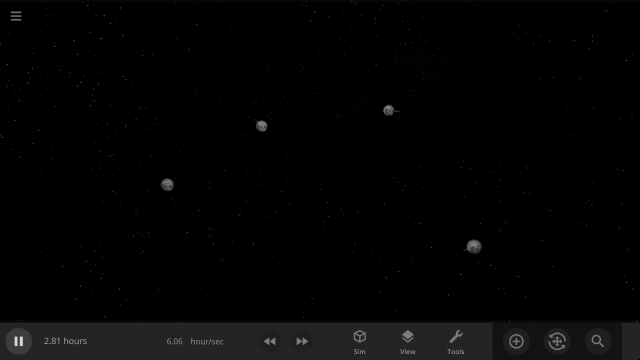
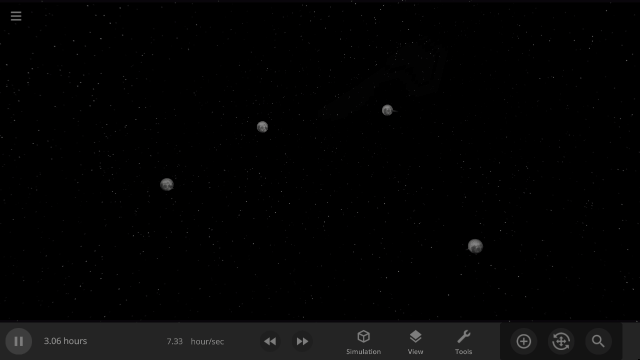
- Everyday Object Collisions
- Currently, when objects collide, they’re treated as spheres. We’re working on adding new physics so that everyday objects, simple shapes like dice and pyramids, but also complex shapes like sledgehammers and spacecraft, will collide according to their unique forms. This is often known as rigid body collision physics.
- Improved Planetary Collisions
- We’re researching methods to allow objects to stretch and deform, like two fluids mixing, during collisions, to improve upon the sphere absorbing method we currently use. Stay tuned for a status update later this year.
- Meteors & Shooting Stars
- To simulate meteors and shooting stars, we’re working on allowing objects to burn up while traveling through a planet’s atmosphere. We’re exploring ways of applying this drag force to objects passing through gas clouds and liquids too. Currently, atmospheres have no effect on objects as they pass through them.
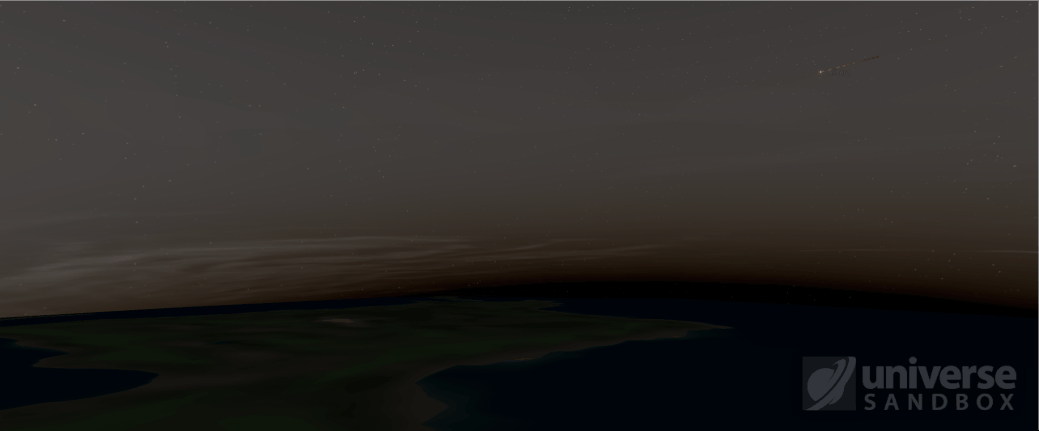
- Advanced Game Engine Features
- As an ongoing project to optimize our simulation, we’re transitioning to the Data-Oriented Technology Stack (DOTS) from Unity, the game engine we use to build Universe Sandbox. We’re excited about the expected performance gains.
Lights in Space
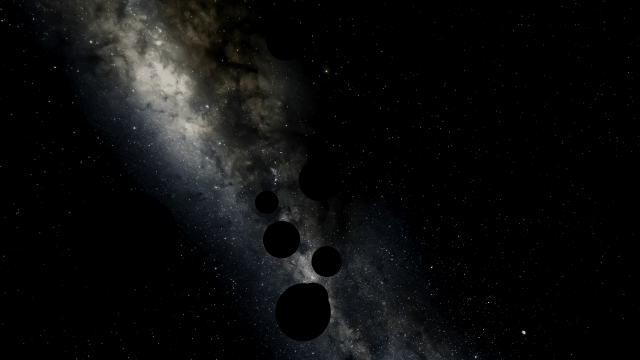
We want to light up the universe – by allowing hot planets and moons to emit light. We’re also planning a massive graphics overhaul that will change how you see the Universe (Sandbox).
- Light ‘em Up
- Light – it’s not just for stars anymore. Hot planets will emit light based on their temperature so you can light up your simulation by setting Earth to 1000 °C.
- This lighting system will eventually allow you to place and customize lights anywhere in the simulation so you can illuminate your universe without stars.
- Untitled Graphics Overhaul
- We don’t want to say too much yet, but we’re working on a massive update to our graphics system that the whole team is very excited about.
Universe Sandbox on Tablets & Phones
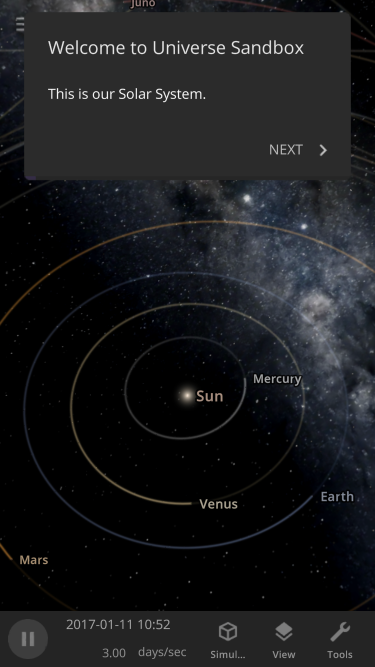
We’re stepping up our development for Universe Sandbox on mobile devices (for iOS and Android) after some delays last year. You can read about our plans in our first Mobile DevLog, and be on the lookout for more updates in the future.
- Small Screen Experience
- The primary obstacle in mobile development is adapting our interface that works well on a large screen to work on a small touch screen (like a phone).
- We’re building a system to intelligently resize, hide, and reveal panels as needed. Our goal is to reduce the need for you to spend time managing the user interface so you can focus on bending the simulation to your will.
- All of the Above
- Universe Sandbox on mobile is built from the same codebase as the desktop version and will have the same features.
- Performance is also critical, and we’re working to make Universe Sandbox run smoothly on mobile devices no matter the simulation.
Enhancing Our Developer Toolkit
We’re creating new internal tools to make developing and releasing updates of Universe Sandbox faster. These include systems to analyze your feedback and automate testing for bugs and issues.
- Testing 1, 2, 3
- Creating tests that run automatically to check our collision physics, simulation performance, and more will help us catch issues before they’re released. These tests record data and images we can use to find bugs more easily.
- Tracking Feedback
- Your in-game feedback and issue reports help us improve Universe Sandbox, and there’s a lot to review. We’re transitioning to a new system to sort and analyze your feedback more efficiently.
- Building the Sandbox
- We’ve revamped our automated build system. This system creates a new version of Universe Sandbox in the cloud every time a change is made by one of our team members.
- This automation saves each of us 10-15 minutes each time we want to review a change.
- With a single button, we can also release new updates to all digital stores that sell Universe Sandbox. This process used to take many hours and involved dozens of manual steps, so this makes it possible to release more updates faster.
- This new system easily makes versions of Universe Sandbox we can test on phones and tablets (iOS and Android) too.
- We’ve revamped our automated build system. This system creates a new version of Universe Sandbox in the cloud every time a change is made by one of our team members.
- New Trailer
- We’re producing a new Universe Sandbox trailer fabricated entirely in-game. We’ll be able to capture it with a single button press, making it easier to iterate on the trailer over time to show off the latest features and improvements.
- You will be able to play this new trailer inside Universe Sandbox, breaking out of it to experiment or explore every shot and simulation.
And Beyond

We’re always thinking about the future of Universe Sandbox. Our longer-term goals include gamepad support, life simulation, and more planet customization options. These are still in early development, and we don’t have a timeline for their release (because software development is hard, and not even our astrophysicists can predict all of the complexities of simulating the universe).
- Custom Textures
- We want to give you more control over the appearance of your planet. Satisfy your world-building desires by creating a planet using custom maps or images, like a picture of your dog.
- Gamepad Support
- What could be better than playing Universe Sandbox from the comfort of your couch? We’re working on adding gamepad support for more ways to control your universe. This will improve our Steam Deck support and has the potential to support other gamepad-based systems in the future.
- Life Simulation
- Our expanded materials improvement is the cornerstone of our plans for life simulation. Once Universe Sandbox includes the essentials for life, like oxygen and carbon dioxide, we will be able to explore simulating simple life that will spread across the surface of a planet.
We’re excited for the year ahead and can’t wait to make Universe Sandbox even better!

about 1 year ago
When rocket physics?
about 1 year ago
This sounds fantastic! Can’t wait for heated lighting and life simulation, especially!
about 1 year ago
lets go you guys rock
about 1 year ago
I like the new roadmap for 2023. This is the very best roadmap I have seen yet.
about 1 year ago
Good work, yall should at an option named “Add Life” its fine if you dont wanna add it, just keep up the good work.
about 1 year ago
I know it’s unfinished but can you release the beta I want to play it
about 1 year ago
Unfortunately, Universe Sandbox on mobile is not yet in a state where it is releasable, and we have no plans to public beta testing at this time. If we do decide to open it up for testing in the future we will make sure to announce it through our mailing list. You can sign up for this list at the link below:
http://universesandbox.com/mobile/
about 1 year ago
I have one more question will the mobile version be free or will it cost money
about 1 year ago
We currently plan on the mobile version of Universe Sandbox being a one-time paid app with no ads or in-app purchases.
about 1 year ago
Very excited about the new Materials! I can’t wait to play around with them.
about 1 year ago
So uh small question when will stellar evolution be added fully since ive been waiting a while
about 10 months ago
We would like to add stellar evolution to Universe Sandbox at some point in the future, but it not only involves complex physics, but also will require a full rewrite of all of our star simulation which is no small task. We’re working on many features right now, like adding more materials to Universe Sandbox which will be required for stellar evolution, so we don’t have a timeline for stellar evolution right now.
about 1 year ago
It looks like Universe SandBox 3.40!
about 11 months ago
when it will release?
about 10 months ago
Universe Sandbox is already available in Early Access for computers running Windows, macOS, or Linux.
We are actively working on Universe Sandbox for mobile devices (iOS and Android) but we don’t have a release date yet.
about 11 months ago
Hello, your game Universe Sandbox is already looking good and getting better all the time with the updates, I really like this. But I think you (probably) have been forgetting something…if you can or if you had already planned something like that but sooner. For exemple, gaz giants storms which we could personalised, being stretch, oval or even near circular but extended out, we could place them as many as we want and customise the colours of the gaz storms. We could had many and the size would be to really tiny to big ones. Gaz giants should have a gaseous atmosphere like real gaz giants. The rocky planets could have tropical storms too but would be clouds and would follow the clouds colour . Atmospheres (like venus) should be more realistic and not be the yellowish, the thick white clouds should be able to be visible, (maybe looking to real images of venus ?). I know it’s hard, but please, can you respond to me if it is or not possible ? Thank you, and have a great day.
about 10 months ago
Thank you for the suggestions. Our planned update to add more materials to Universe Sandbox will also include more realistic atmospheres for rocky planets. Stay tuned for more information on that in the future.
We don’t currently have any plans to simulate weather on planets, as this is quite complex and requires a supercomputer to do accurately in real-time at the moment.
about 9 months ago
When will the mobile version be released?2023 is halfway through, and I’ve been waiting for more than two years